 |
Where did the PWD come from? What is it like to live with?
|
 |
| Return to homepage |
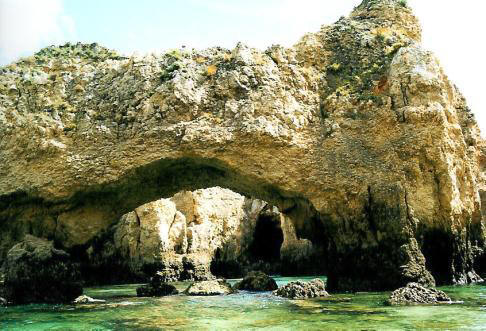
The first words of the Portuguese National Anthem are "Heroes of the sea, noble people." While the Portuguese people are no longer the seafarers they were in the time of Prince Henry the Navigator, the sea remains important to their life and culture. Henry's own maritime school was perched on a rocky point at the southern tip of Europe along the steep cliffs of the Algarve. Along this rocky coast, Portuguese Water Dogs, believed to have sailed with Portuguese explorers, came to work as crew for the fishermen of the Portuguese fishing fleet.
The life of a fisherman in the North Atlantic meant hard work, long hours,
vigilant attention to the moods of the sea and to those formidable
cliffs that led to home when approached with care, or to death if thrown
upon them by storm and fog. Bravery, persistent attention to the work at hand,
stamina, and speedy reactions to ever-changing conditions spelled the difference between success and failure, and
ultimately between life and death.
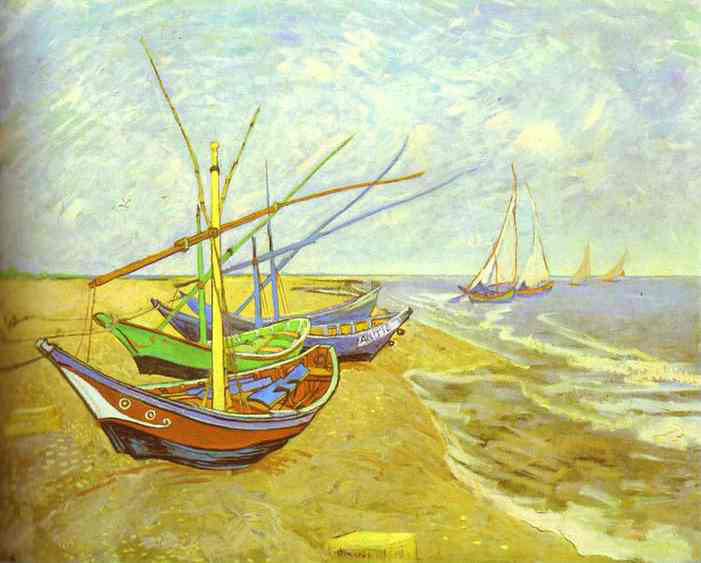
Into this harsh environment and demanding life the fishermen rowed and sailed their boats, boats painted gaily with colors that reflect the cheerful and optimistic nature that sustained their work. Frequently roosters, the Good Luck talisman of the country, adorned the bows and fantails of these small and sturdy craft, much like those in VanGogh's painting.
There was no room on these small craft for extraneous gear or being, even for the comforting presence of just "man's best friend." The Portuguese Water Dog was a contributing crew member. Records have been found that show the owner of each dog being paid for the dog's daily work--"one large cod and a bowl of rice"
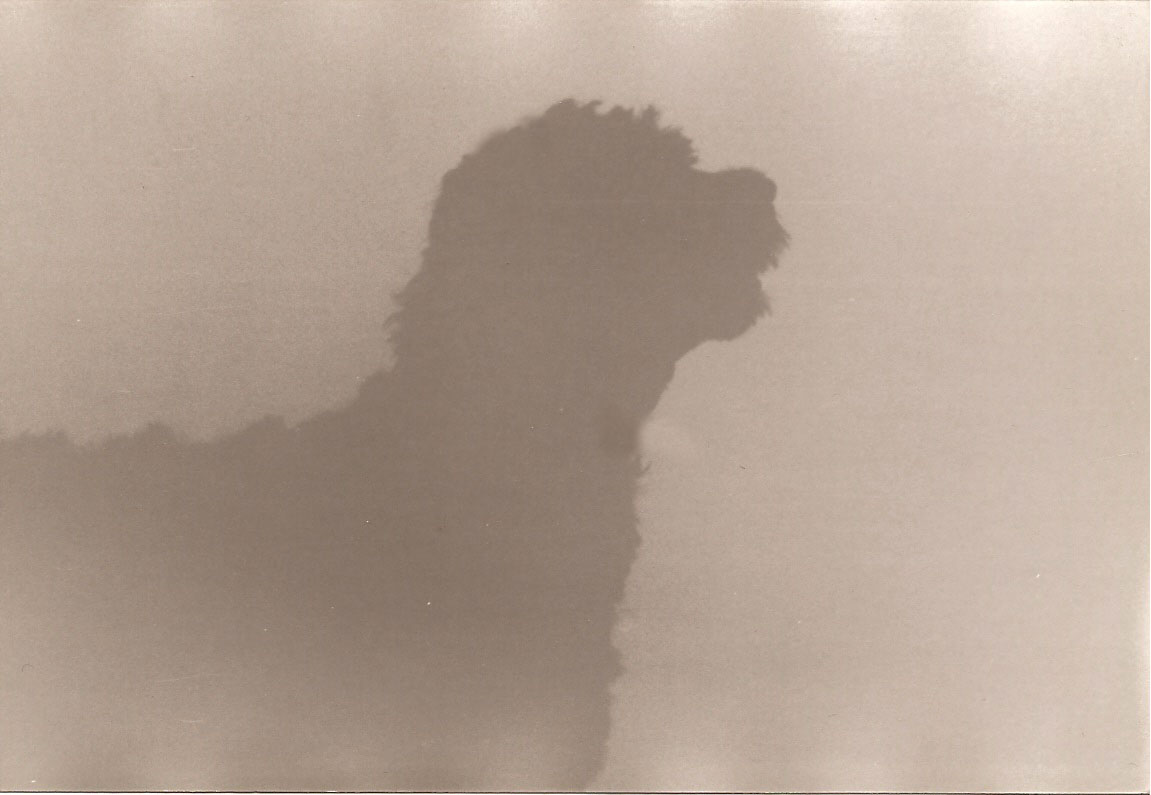 What were their duties? Strong historical evidence is sketchy, but references
exist to pulling nets through the steep Atlantic chop where the cod were to be
found, carrying messages between boats, diving underwater to retrieve gear gone
overboard, and standing watch during storms, perched in the bow where their keen
hearing could pick up the sound of waves crashing on rocky shores so they could
bark their alarm.
What were their duties? Strong historical evidence is sketchy, but references
exist to pulling nets through the steep Atlantic chop where the cod were to be
found, carrying messages between boats, diving underwater to retrieve gear gone
overboard, and standing watch during storms, perched in the bow where their keen
hearing could pick up the sound of waves crashing on rocky shores so they could
bark their alarm.
What personalities could excel in this work? Like their owners, the dogs became hardy, persistent, strong, alert and quick. Like their owners, they became cheerfully convinced that success could be theirs. They learned to quickly obey the commands given to them, to hunger for an object to carry or retrieve, and to be quite vocal about the unusual or unexpected that crossed their path. And they became not only used to the close presence of humans in the confines of a working fishing boat, they came to crave it.
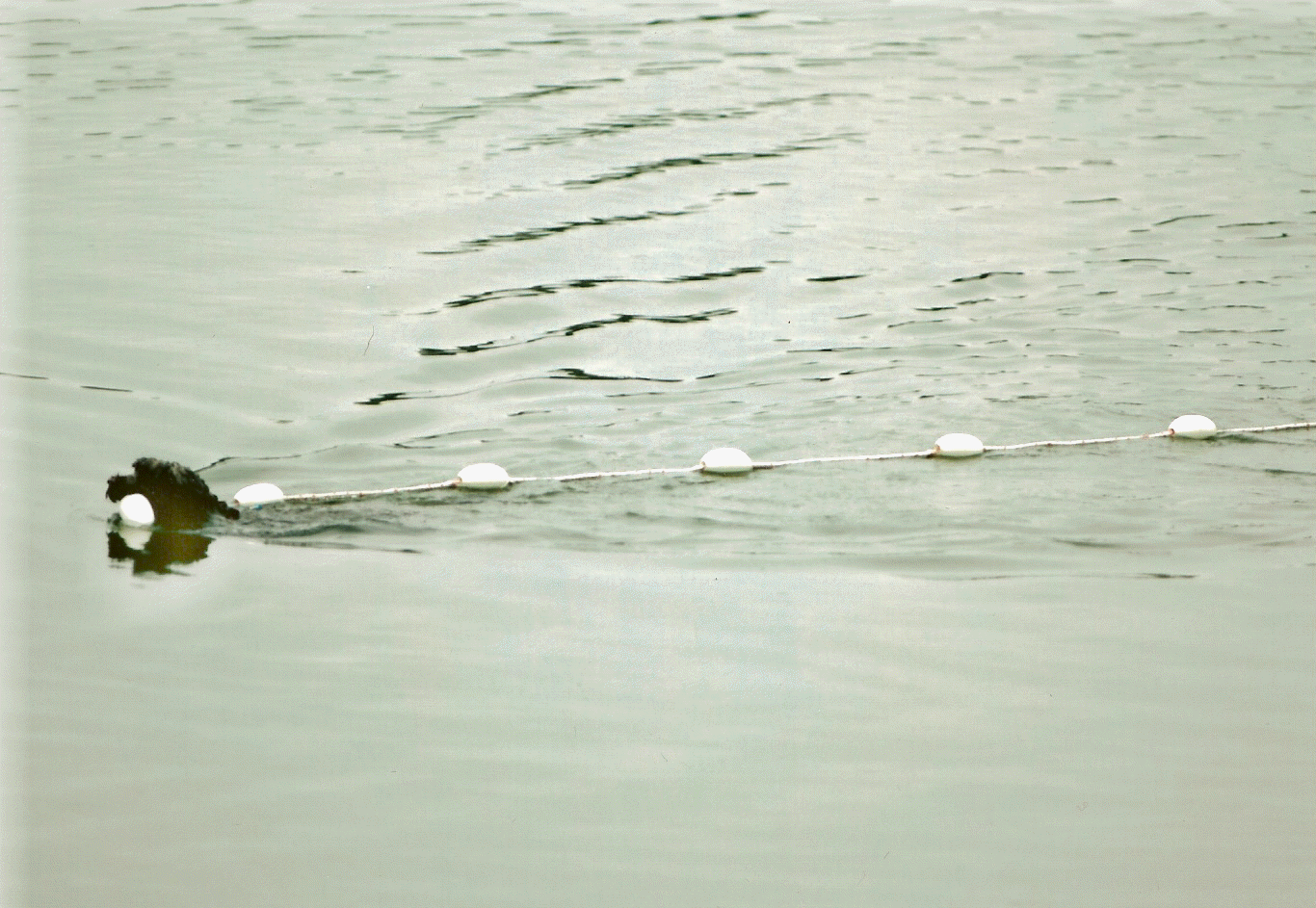 For more than a century, PWDs served the Portuguese fishing fleet, working in
cramped quarters by day and stretching their limbs with rowdy romps through the
streets of the Algarve villages by night.
For more than a century, PWDs served the Portuguese fishing fleet, working in
cramped quarters by day and stretching their limbs with rowdy romps through the
streets of the Algarve villages by night.
But radios came that carried messages faster. Power winches pulled nets in faster, and without the need for more crew. As mechanization came to the fleet, the jobs of the dogs became obsolete, and the dogs themselves were unemployed. Though their work was gone, the dogs retained the characteristics for which they had been bred, the very characteristics which made them less likely to be popular as a household pet and companion to children. Though their patrons like Dr. Cabral and Dr. Bensuade and those to whom they entrusted their kennels sought to keep them alive, the breed dwindled as all of Europe suffered in the years following World War II. By the late 1960's only 16 Portuguese Water Dogs remained in the world.
Followers of the breed imported dogs to the United States when they could. The renaissance of the breed in this country gained momentum through the leadership of Deyanne Miller , who imported her first PWD in 1968. Mrs. Miller started Farmion Kennels and led the establishment of the Portuguese Water Dog Club of America as well as acceptance of the breed into the American Kennel Club Working Group in 1984. The AKC description of the breed contained in the breed standard is similar to that used in Portugal, with the addition of a working trim for the coat.
But what of the mind and energy of this breed, used to hard work by day and freedom to roam by night? How does a muscular working dog fit into in urban life in the US as a companion animal ? What IS a Portuguese Water Dog, really? Perhaps the breed standard found at the link above, written in laudatory terms by advocates of the breed, could benefit from some rephrasing.
What It Really Means
General Appearance - Notorious as a brawler for centuries along Portugal's coast, this seafaring breed was prized by fishermen for a pushy nature and a robust, medium build that needed the mental and physical demand's of a full day's work in and out of the water to reduce its energy level to one that allowed it to hear and obey its master's commands.
The Portuguese Water Dog seeks and loves to splash and wallow in mud, water bowls, toilets with open lids, and any liquid--water, paint, etc. It does this with great finesse and stamina, unendingly, while aiding its master by retrieving any item that it sees and wants to carry, regardless of size, delicacy, or ownership. Its incessant retrieving instinct leads to a dog that must have something in its mouth to carry, chew on, or swallow, whether that item be edible or decorative, such as furniture.
It is a clinging companion and an incessant alarm
barker. This highly manipulative breed is distinguished by two coat
types, either curly or wavy, which require extensive grooming, bathing,
brushing, combing, detangling, etc. far in excess of the time that would
be spent vacuuming up dog hair if it were to shed, which it does not
(carrying dirt, twigs, dust, mats, etc. around with it until groomed).
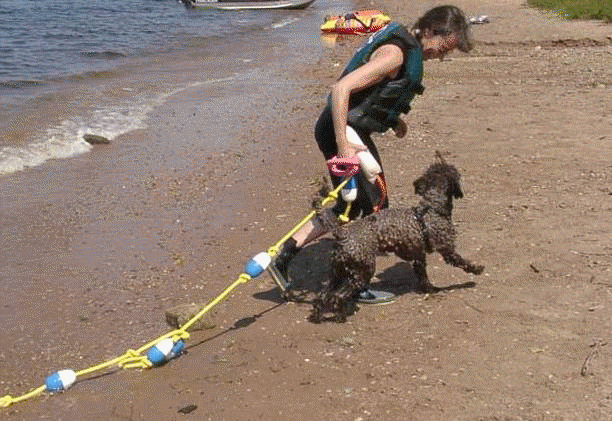
It has an impressive head of considerable breadth and well proportioned mass, which it uses for head and body rams; a ruggedly built, well-knit body which enables it to counter-surf and jump onto tables and over fences; and a powerful, thickly based tail, carried gallantly or used purposefully as a rudder or to clear items off coffee tables and destroy Lego constructions built by children on floors.
Expression - Direct, rude, and demanding. The Portuguese Water Dog likes to be at eye level with humans, resulting in an almost un-extinguishable jumping-up greeting behavior.
Temperament - An animal with a mind of its own, brash, and ADHD. A dog of exceptional ability to manipulate people and its environment, and a strong desire to lead that makes it incessantly desire to be around humans that it can bend to its wishes. If trained by a person with patience, superior intelligence, and unilateral focus, it will obey its master with facility and apparent pleasure until it decides to test or until it devises an alternative to try.
Makes you think, doesn't it? This is a breed with little background as a pet, and lots of background in having its own way. Its saving grace--some say its only saving grace--is its love of humans. And that brings us to our own commitment to the Portuguese Water Dog at Restora Kennel.
I actually got my first PWD in 1985 as a companion for my Corgi on land while I worked the long hours required of a sailboat dealer, and as a companion for me in the shorter hours while sailing. It took quite a while--over a year as a matter of fact--to find both a litter with puppies available and a breeder who would sell a dog "west of Ohio." But finally Gaucho arrived in Minnesota by plane from Sonja and Jimmy Santos of do Mar kennels in New York.
That little brown curly puppy went on to become Ch. Glad Tidings do Mar, CD, WWD, ROM, POM, multiple years TopTen, and a gathering of other accomplishments. Most of all, though, he had two distinguishing traits: He had eyes that looked into your soul, and he was an incessant water dog. He swam for recreation. He swam for work. He insisted, with fiery eyes and stamping feet on the wet sand as he brought back his dummy, that I give him a job. He transformed me from a fairly shy, opera and museum type into a researcher, dreamer, and advocate for the working dog that ultimately led to new friends here in the Twin Cities and around the country who formed a network that proposed the first Portuguese Water Dog Club of America water trial.
"Betcha can't have just one?" Let me tell you, these guys are worse than potato chips! It wasn't long before Mora, Ch. Flores do Mar, joined my household. She was the dam of two litters sired by Gaucho. Gaucho also was bred to other lovely bitches, including Ch. Roughrider's Megan of Jaisal. Their daughter Summertime became the first bitch in North America to go Best in Show, in Canada in 1993. Skye and Grace, who share my home today, are also descendants of that litter.
PWDCA
acceptance of the water trial in 1991 was just the beginning. I became
an exhibitor, trainer, conductor of water workshops and training
seminars, a PWDCA water trial judge, and continued to exhibit the dogs
in conformation, obedience, and water work. I recently returned to
breeding, delighted to be able to place puppies with new friends as well
as with old friends who feel like family by virtue of having had puppies
from Mora's litters.
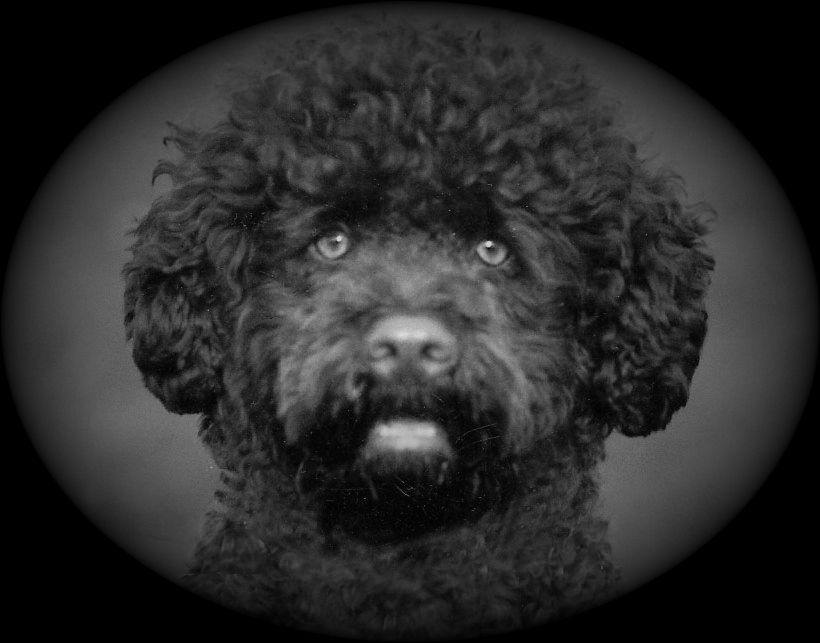
Remember that shy museum type? Working with PWD owners in training for water work led me to realize how much I like working with adult learners. So in 2000, I returned to school at the University of Minnesota for a Master's in Education and an Adult Education Certificate. I am currently in the final work for a PhD in Comprehensive Education with a research emphasis in Human-Animal Relationships.
And remember those eyes that look into your soul? Through Gaucho and his daughter Tunes, I discovered the work of therapy dogs, a miracle of communication backed by a growing body of research data that supports what we dog owners have known all along...the inexplicable value of companion animals.
So, if you get the picture of allegiance to a rugged and powerful breed, its work and its mind, you are right on target with what we are at Restora. My breeding goal is to produce a workmanlike mind in a compact body. My goal as an owner and trainer is to become, and help others become, an informed guardian, not only of our own dogs, but of the breed as a whole.
June 27, 2006